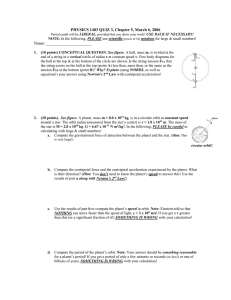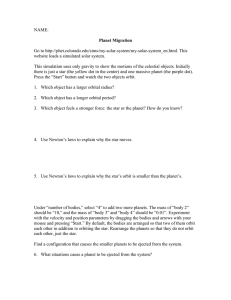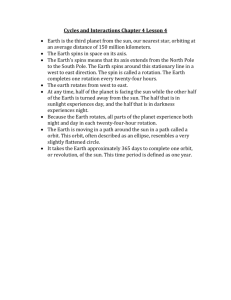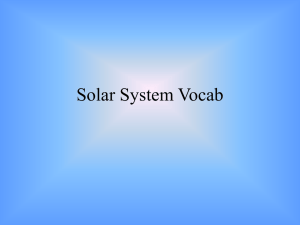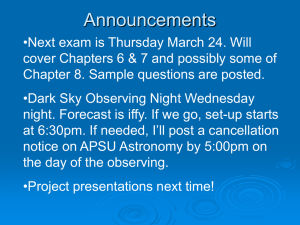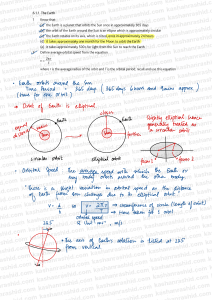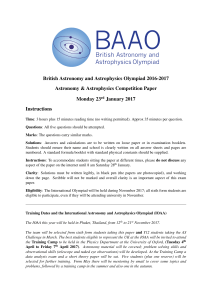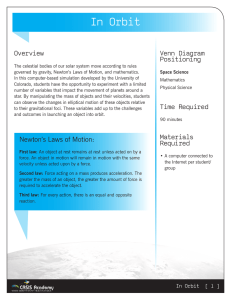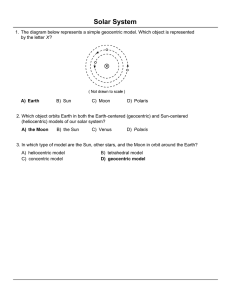PHYSICS 1403 Quiz 8, February 29, 2008 1. TRIVAL, NEATLY &
advertisement
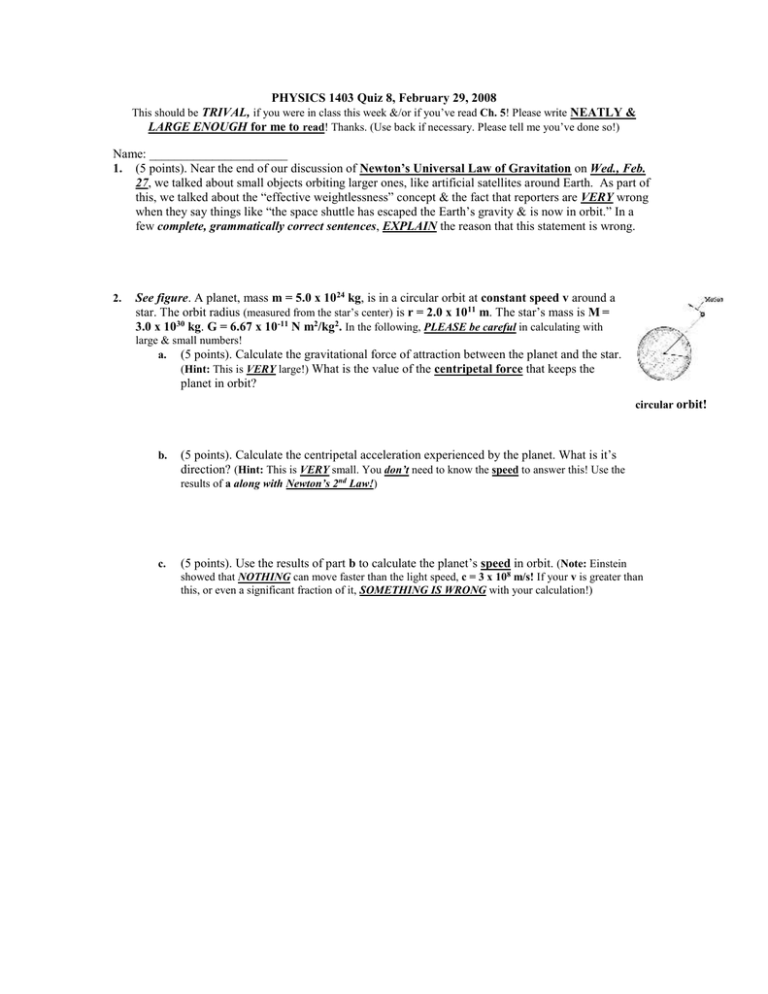
PHYSICS 1403 Quiz 8, February 29, 2008 This should be TRIVAL, if you were in class this week &/or if you’ve read Ch. 5! Please write NEATLY & LARGE ENOUGH for me to read! Thanks. (Use back if necessary. Please tell me you’ve done so!) Name: ______________________ 1. (5 points). Near the end of our discussion of Newton’s Universal Law of Gravitation on Wed., Feb. 27, we talked about small objects orbiting larger ones, like artificial satellites around Earth. As part of this, we talked about the “effective weightlessness” concept & the fact that reporters are VERY wrong when they say things like “the space shuttle has escaped the Earth’s gravity & is now in orbit.” In a few complete, grammatically correct sentences, EXPLAIN the reason that this statement is wrong. 2. See figure. A planet, mass m = 5.0 x 1024 kg, is in a circular orbit at constant speed v around a star. The orbit radius (measured from the star’s center) is r = 2.0 x 1011 m. The star’s mass is M = 3.0 x 1030 kg. G = 6.67 x 10-11 N m2/kg2. In the following, PLEASE be careful in calculating with large & small numbers! a. (5 points). Calculate the gravitational force of attraction between the planet and the star. (Hint: This is VERY large!) What is the value of the centripetal force that keeps the planet in orbit? circular orbit! b. (5 points). Calculate the centripetal acceleration experienced by the planet. What is it’s direction? (Hint: This is VERY small. You don’t need to know the speed to answer this! Use the results of a along with Newton’s 2nd Law!) c. (5 points). Use the results of part b to calculate the planet’s speed in orbit. (Note: Einstein showed that NOTHING can move faster than the light speed, c = 3 x 108 m/s! If your v is greater than this, or even a significant fraction of it, SOMETHING IS WRONG with your calculation!)
